Augmenting organizational capabilities Douglas C. Engelbart. 1.* - unverified transcript - Preliminaries.2 Welcome to Session 2 of this Colloquium at Stanford, "The Unfinished Revolution." And, I need to repeat periodically that when I say, "The Unfinished Revolution," I'm not talking about my personal revolution. It's a revolution the world has yet to go through and it isn't finished. And a good purpose of what we're trying to talk about here is trying to make a picture of what that revolution could be and the strategic way in which all of you warriors can go about doing it. 2A
One thing to announce at the outset is that it turns out, around the world enough people have been listening and coming back with comments and questions, et cetera, that it has totally overwhelmed our staff's ability to cope with it. So, anybody out there or here that hasn't had personal answers, please, don't feel slighted. We're just delighted, but somehow we're not quite clear how we're going to marshal the resources. A lot of it is people power, which somewhat takes more money in order to make a co-operative, co-ordinated way in which the dialogue can get going. 2C It was one of our purposes, explicitly; to try to elicit and develop a dialogue around here as a real prototype, hoping that the stimulus of the Colloquium and interaction we could produce during the time would help develop a community out there. But the flood is sort of making it hard for us. And, Peter Yim has been doing a marvelous job over here of co-ordinating and putting together software to try help it, and management, et cetera. 2D Do you have anything to add, Peter, that you'd like to tell anybody? 2E Peter Yim: You might like to take the opportunity to introduce the two teaching assistants because of the fact you've been working with them in one way or another. 2F D.E.: Yeah, good idea. We actually, since here in seminars at Stanford, they offer to appoint teaching assistants, which is a formal thing; and I've been gone from university for so long that it's hard for me to get back on gear, but one of our teaching assistants is Marcelo Hoffmann, here. He's a little bit bedraggled looking old guy but he's been serving voluntarily in his off-hours, which has gotten longer and longer, to help co-ordinate the ... try to develop the community as an interacting .... And then, Hilary Lamont, who isn't here, but she's in Washington D.C. where she works, is co-ordinating the content for the thing of the repository that we're building. And Peter is doing a lot of the support service. And Frode Hegland over there is also contributing. And then, our prize we got this year from Japan is Shinya Yamada. His father donated him. He's just terrific. So anyway, these are the staff. I wish we had fifty people. 2G Later on, I'll try to point out the kind of picture we have of how a repository actually could work, and what it's for, and what would be in it, and the dynamics of it are. It represents one of the big challenges today. 2H
The way the Colloquium is going to work is, there's
a whole set of concepts that are intertwined to make a strategic framework,
and I've tried for years to just go through them; and, in one sitting it
doesn't seem to soak in. So, I'm going to play tricks on you. A lot of
times, I'm going to go by the same slides in different sequences to kind
of show you the interactions that they do. One of the personal problems
I have is, I keep thinking as I get older my memory doesn't work so well.
But I really got my comeuppance about eight years ago when my wife, she
heard that once too many and said, "The problem with you, Doug, is that
you don't remember how bad your memory used to be." So, you got that. So,
I may go by things twice because I've forgotten about them, that as I've
told you already, but really I'm purposely trying to do that. So, I'm going
to take several passes. 2J
Struggle.3 There's a fair amount of history back through all the years; and, some of it will be worth bringing out from time to time because it makes a difference; sort of why it evolved like it did. There are a lot of experiences, which I don't want it to get to be like, "Oh, poor Doug. Look, he got squashed here, or pushed out the door here, or ignored there." There's a very, very important thing we're going to hit all the time is prevailing paradigms, and these are examples. 3A
When the corporate vice-president for information technology at McDonnell Douglas had given some of the volunteers who wanted to make this work within the company and we'd spent a year making plans, interacting on how this kind of interlinking could go on between knowledge work support and the computer-aided design and the manufacturing, and got enthusiastic people, and go back to the corporate vice-president and said, "Okay, you told us if we could get this moving this far then you'd do something." 3C "Well, I'll tell you guys," he's a very earthy fellow, "I think I've changed my mind." He says, " I talked to IBM, and DEC, and Hewlett Packard, and none of them knows anything about this link .." He used the nice expression, that barnyard expression about what links were like. "None of them knows anything about that. So, I don't see how the hell I can start investing in this." So, bingo. There went a year. We learned a lot, but ... there have been a lot of those things just put you up against. 3D So, one of the real questions during the time we're bringing this Colloquium out is: are there paradigms out there and within the community of people wanting to watch this ... are they suitable? Are they sort of shifted in a way so what we're saying now will take root and grow? And if they aren't, well we'll brush our hands and try again. I mean, as long as we can get support for trying again. There's a lot of relevant stuff that's on our website, and here's the URL [Table 3]. 3E I assume that everybody has found out that you can go directly to getting the sequence of slides online with your browser. So, you can step through and review old slides. And you can actually make a URL to make a link to any one of those slides that you wish, which is an important feature. If people get into dialogue, they can send an email with a link pointing to a particular slide and invoke the kind of dialogue we can do about it. 3F So, the other side of that is, what do we do if we get a whole bunch of things like that? One of the things, if we could assess them well enough now, would be that people go and digest this stuff and tell me that, "Here are the kind of concepts that seem to be missing. And, there's a lot of contention out there about your statements about this." And, either I'll retreat and say, "Oops," or I'll come back and try to clarify and resolve it. But that's a downstream thing. 3G Also, when we go through, we'll be talking more and more about the issues about these improvement communities, of which what we're trying to launch, is a special kind, and so, you'll see the sort of dynamics that we expect and the issues that are raised in there. And one of the particular issues of the community we're trying to build is: how do you learn about the problems, and the challenges, and the opportunities, and the techniques, and the processes, et cetera, that will let a distributed community of people that are trying to do an improvement attack, how they can co-operate and work better? So, that's our pursuit. 3H
So, the "next plus" [Table 4]. A couple slides from now you're actually going to start seeing a few extracts from going and looking at web. And Shinya helped extract the web picture and paste a URL over it so you can see it ... so, a couple different signs. And, I'll probably use that more and more during the course of the seminar. 3J One of these talks about the library, we just call it a poll, it's a couple of pages in our web in which we list a bunch of the different reference materials that are there. So, throughout all the years that we're out there, beginning 1960 right on in through '89, very active out there; then, in the nineties, a little bit more, et cetera, that we're publishing reports and papers. A lot of papers have been put on the web. So there's a lot of reference material there that we can point to from time to time. So, we'll go now just to sort of see that. 3K There's one more thing that we need to point out is:
in the history of what we're going to talk about, we're going to talk about
two interactive link systems. One of them is called NLS and the other is
called Augment. Well, they were both the same. It was just at a particular
time in history that we got moved out of SRI where we'd done all the research
involved in building it, and we called it NLS up to that point. And then,
we went to the commercial world, which was all we could do to save all
that work, and the system, et cetera, because the research world dried
up. So then, the publicity, our marketing guys in that commercially, they
said, "Let's get a new name for this; NLS is too weak." So they named it
Augment because we had been talking about augmenting the human intellect,
et cetera. So, that was nice. So, it's the same system. 3L
Augment, much more than a wordprocessor .4 So, Augment's been in there and, I still use it, believe it or not, because there were so many things in it that can do things that you just can't get elsewhere today, which is diminishing some. And, the interface between my working in that world and the modern, up-to-date one is getting more awkward. But anyway, if we'll have time we can show you. 4A But, one of the features in Augment was that every object in any document was always addressable explicitly with the address you could put into a link. So, your links could point to a word, a character, a paragraph. You could even designate a branch that you were talking about that would be a section or a chapter of a whole document. And, it was even more than that. Your link address could take a route and it got there where you were pointing at would be another link. And you'd put in something in your address and when it got that link, take it. So, you could do this indirect linking, which just had real power that you could develop processes and procedures in that human system side of how you could work with that. 4B
One of the things then is, when we printed it out we would usually print out the actualm hierarchic code location number on it. So we formed a habit of, when we were publishing something, if the editors would let us, we would put those little numbers at the end of every paragraph. So then we found a way that, when you go out in the HTML, that those are actually an address tag. So, you can put that number at the end of a pound sign and you go right to the paragraph in the things we published like that. So, that's what you'll see in here. 4D And, there's some much fun things beyond that, too, that we're making a dynamic thing, that they point to themselves. So, it's a link. So you put your cursor over that and you can elicit what the URL address would be to point right to it. But more than that, you can click on it and it hoists it right to the top, which is what we used to use all the time, in NLS and Augment. Scrolling has its advantages, but when you want to just get right to something, especially if you want to link to it, it's just very much useful. So, you'll see some evidence of that. 4E So, here's the ... looking at this URL at the top, which is a part of the browser, points exactly to this branch to ... and you see all here all lined up like this. And, these are the array of linkable addresses. And the one that we've pre-fired, so it's in red, is to a paper published in 1992, called "Toward High Performance Organizations: A Strategic Role for Groupware." And, it goes through quite a few of the steps we're doing in here and the detail in there, talking about scaling, talking about improving infrastructures. You go back there and get a lot more detail and a list of questions from it. But, in amongst the rest of these things ... there are just very, very interesting. I'm almost tempted to click on some of them. 4G This "Authorship Provisions" in 1984 was a very detailed description of Augment, and the structure, and the conventions for addressing ... many, many other things that are in there. And others ... going back here in the bottom one, "Augmenting Human Intellect: A Conceptual Framework" in 1962, was that report that I waved in front of you last week. It's really interesting that some group of technology historians in Germany converted it to web form; and did a very, very nice job, even with the diagrams that show all the feedback groups and the planning, et cetera. So, as old as it is, it's still full of good things, even though some of the terminology will make you wince a little bit because it's so old. 4H
Then the next thing here is a jump there to that cited paper takes you to this document and we talk about journal. So, you see in here it's got an address. It is augment-132811. 4J So, one of the things we initiated in 1970 was something we called a journal, with which anything you submitted to it--a one-liner to a big, big document--would go in there and guaranteed to be delivered back, and they would assign you a serial number of it, which was good. You didn't have to know the pathway to that, all you had to know was which journal and what the number was and you get it back. And you were guaranteed that it would be like it was when you did it. So, as a matter of managing the knowledge and keeping track of things, it was just a big, big step ahead. And, something like that is needed very badly in the world out there. If you ever make links to things in a serious sense and they move the document around a little bit, you're in trouble. So that's the early time. And then you can see the purple numbers out here. And so, the next one follows the purple number that we are talking about the ... anyway, I've already told you about all this. 4L
So anyway, this follows the link that goes down inside that document to a particular what we call a branch. And so, that's very much what Augment would do; but it would do even more. We had viewing options. We said, "Look, when you've got the computer supporting you, let's don't just use it like a word processor--what they did is, what you see on the screen, is what you're going to have on paper--look, you've got much more opportunities. Let's have them put on the screen under control, flexibly, all kinds of views that help you study and assess what's there." 4O So, one of the very first ones we did a view that would either show open like this, or just show the first line of every paragraph, which turned out to be very, very useful. And had a side benefit that people started doing what good writing policy is supposed to set up, that they put more in the first line that would tell you, more or less, what the paragraph was about because they know that people will be scanning it one line only when they do it. 4P So, there are other things. How many levels down in the hierarchy would you show? Show me only things that have certain content. And the structure we put on it was very flexible because in a hierarchical structure, all the brothers and sisters at the same level, you could take a look at that and then you could start sorting on it. Or, you could do content analysis that you would, "I'd like to that file and pick up every paragraph that's done at a certain level, has a certain content, and don't bother indenting it. Just put it flat. And, when you do it, put something on the end that tells me where it came from, a link." 4Q Or, I can go throughout other documents like that and say, "Hey, I like this piece of text." So, you set it all up, so you pick out that text and it gets installed in a list that you've created someplace, that you don't have to keep in sight, with a link in the end from where it came. Then you get a bunch of those done and you start massaging them and moving them around and adding notes to it. You did a very good job of researching, and every kernel that came from someplace, you know where, you can go back when you want it. 4R So there were many. It]d take day after day of showing you things and letting you try it to kind of get it across. That's been sitting there all these years. And we kind of wave our hands to the world. And, we slowly realize that the momentum that's there now, and the paradigms that are there--that: "Hey what's there is the latest." And, it started out with a very simple thing, with WYSIWYG et cetera, and they're hung up in those things. So, how do you get the world oriented about getting some explicit evolutionary process by which they could go try it? And explore more things that are in this fan of things out in that frontier that you could go to, that aren't something set aside? So, it's going to take some real planning and thinking to try to get an evolutionary process that lets you have something that can really, in a practical world, produce the kind of evolution that this scale of thing has to have. 4S So here's just diving into another one. In every figure, it has an address, too. Bingo, down there. 4T So, we didn't have the kind of graphic capabilities
we do today, but, anyway, I just thought I'd give you a flavor of this.
And later on in the Colloquium, we're going to be talking more about these
kinds of capabilities, trying to say that the way in which these kinds
of capabilities, and more and better, can evolve in the world has to be
some different way from ... they'll only come out with things that will
sell a bunch. And that will be only if it's easy enough for somebody to
learn in the current state of frenzy. 4V
Core concepts and vocabulary - 1.5 So anyway, there's just a plan we have to have, realistically, according to the way people work and get motivated. This is one of the things .... Also, among the paradigms, one of the things is: how much different, and how much more powerful can our environment be from what it is today? Sometimes I think it's almost as if when they invented writing, they didn't want to go away from the stone tablet because, somehow, that was real, see? And that would have crippled us a little bit, wouldn't it? 5A So, here's one you've seen before; and, you'll see it again. 5B
So this goal has been motivating all the time: as much as possible to boost mankind's collective capability for coping with complex, urgent problems. Okay, so what we're going to do here now is review some of the core set of concepts and the vocabulary terms that provide what I call the strategic framework associated with pursuit of that goal. You've been exposed to a bunch before. Here's another slice through. So, these are some of the terms, et cetera, and concepts. 5D
Organizations as social organisms. This came out thirty years ago to just say, "Hey, they are." And, this new nervous system that the digital technology will provide is going to offer really significant evolution in those organisms, see? So, then we move to, say, one of the very important aspects of organization is its capability infrastructure. And, this had importance because looking at it like that you could point out how many places in that infrastructure could new technology make a difference. And, if it does it at lower levels then it would probably enable restructuring the higher levels, which, in turn, would allow the restructuring of even higher ones, et cetera. And, augmentation about just pointing out in the world how much we're already augmented and what we'd be like if we didn't have all the things we list as part of your augmentation system. You'd be a speechless, primitive person that could only, maybe, probably speak because language; but that's already augmented you a lot. 5F And then, the co-evolution frontier because we talk about the sort of technology artifact, et cetera, system, and the human system side. Those things are going to co-evolve between them and within them very much. So, this constant co-evolution that's going on has to be something that you look at. How many different elements in that whole system are simultaneously evolving? Which makes organizational improvement, organizational evolution, et cetera just a lot more complex. And the huge effects of the prevailing paradigms, just very, very much. 5G So, you'll be part of an experience, or experiment
here now, trying to come out and tell the world, "Hey, there's something
here that looks like there's a lot of good reasoning and concepts, et cetera,
around with taking a new perspective, resetting your paradigms." So, let's
just see what happens. At the end of these six weeks, there may be a lot
of confusion, and a lot of griping, and some barbs thrown like that, and
maybe nothing will happen. But on the other hand, by the end of this particular
session, I want to tell you about the kind of things I would like to see
happen. So anyway, this is one that we developed last week. 5H
Co-evolution and prediction.6
This central thing of a capability infrastructure representing the sort of thing that you have to work on if you're really going to change this to this goal. And based upon the very basic human capabilities you have here, to interact with these capabilities and with the paradigms, organizations, procedures, and methods, and with all of the tools, et cetera, like this. So, all this dynamics is there to support what you have as a basic human capability and what you get conditioned for your social reflexes, et cetera. And, you have to think and learn. And knowledge you have to have. So, you have to have skills and just latent knowledge, et cetera, in order to operate within that. But that's the whole thing that gives you any real capability, or gives your organizations. And this model shows, you could look at this as a human, an individual human, or you could take any organization you want to, and plunk it in here and this is, at least, my contention. I've been living long enough so I can say this wildly and loosely. 6B So, it would be very interesting if we could get more dialogue going and people started saying, "Where could this go?" Dig down into it, in there, and dig down into capability infrastructures because the picture I've always had is saying, "Oh look, maybe here's a very viable capability and it's got an organization for making it run. And it's dependent on quite a set of sub-capabilities. Well, so is this one over here dependent on some of the same ones. So, if one of those subordinate capabilities suddenly got boosted way up, hey, many of the ones above it could then be looking to re-engineer them--recombine how those capabilities are formed, or improve the capability there--which would then move on to the top. So, the whole corporate--organizational, personal, whatever you're going to talk about--capability is just a lot of evolution going on simultaneously in there. 6C It's been happening all the generations that we kind of can be aware of, except that now adays, the transitional rate, and the sophistication that's happening on this side transcends anything that ever happened before. And I keep saying, "Look, the only thing I can think of that is qualitatively similar--that means it made the kind of change throughout all the social structure practices that this can happen in the world--the only thing I can think of is when the hunter-gatherers discovered agriculture." That invention changed tremendously the whole social structure; the language, the practices, the family relationships, and everybody else, you know, like that. So, that's what I think. 6D They say, "Like a printing press?" No. A printing press was kind of feeble compared to what this is going to be--or any other thing you can think of that was in modern. Well, that's my contention. 6E It'd be very interesting if I got people a lot smarter about history, and dynamics, and anthropology, et cetera, than I am that would try to help think this through and make the models. But, in other words, if we don't get some shared picture like this among the shared paradigms in the world--that there really, really, is something explosive going to happen there--then the kind of efforts that need to be applied to sort of dig in and cope with what's coming won't get exercised until things get pretty late. This is one of the talks here for bringing the energy story back here as saying, "All right, there's something that you can point to that really is ... there are a lot of things you could point to that are really important." And, how do you get the world's paradigms shifting enough so that they take it seriously? 6F And then, if they do, what are you going to do about it? How do you marshal the kind of co-operative solution development and execution that's required? Who knows? They're sitting there waiting to tell you the answer. 6G
So anyway, then we went on to say, in a very simplified way: if you took these two dimensions of tool system and human system, and watched the way the tools developed and harnessed like that, and here's the best that's anticipated today, and in 20 years you might anticipate way out there so that all through the history the evolution went on there. And this population, today in the world, probably occupies some domain about like this. People get used to the fact that in 20 years technology is going to move out like that. And, yeah there are different other things to do it. So, we're going to be moving out here, you know, one square every 50 years or something of that sort. So, then the question was, "Well, hey, what if it's more like that? That the technology's made this big spurt?" 6I
And, this might get people's attention if they really, sort of, can see it like that. So how do we get help from people that can help detail this out to say, "Let's try to detail this? And let's try to see how many different dimensions there are on each of these." So, this is a multi-dimensional space, not just two-dimensional. But out there, is out there. And the pathway for any given organization to migrate as they're trying to cope with the changes out there, and change themselves and their capabilities and practices, et cetera, is going to be something. 6K So, it'd be very easy, in this multi-dimensional space out there, to get wandered off, and get lost, and find yourself in a dead end. So, it'll be extremely important to every organization to try to help me help getting a picture out there sort of develop. And it's a picture that, itself, is going to take a great deal of intellectual knowledge work, co-operative work, to try to develop the picture, the picture of what's happening now, and of the different paths that different people are advocating. And then, what happened to them in the last year since they advocated and took a path? And, what are the paths open to you, your organization? 6L And how much is it going to cost? And how in the world do you convince the people that provide the funds for your organization? If it's a corporation or something especially, but anything else, too. How do you get the funds to move in that world? Because the questions are you may get stuck so you become obsolete. And so then, your organization evaporates. Well, maybe it deserved it, or something, but on the other hand, maybe it provides a very important service to the world that ... who's going to fill the gap? And that'll be a problem for the rest of the world to take care of. So, if your government doesn't start moving in its ability to cope and support the citizenry, then it might find itself in a similar way. Well anyway, looking that closely, I came to the conclusion that this picture .. you're right, it isn't very accurate. This is the one we ought to use. 6M
The relative change out there, of what's anticipatable
and lot of that's depending on both the digital explosion, but also the
nanotechnology and its impact on the digital world, and in the health world,
and many others. It's just really going to be change. Next week, or so,
we've got somebody coming in who can give us a pretty good picture of a
lot of the things that are happening in that world, but also some of the
threats and problems. 6O
Birth of the open hyperdocument system.7
So, in all of that, as another thing I learned in the aerospace world, was how many interactions there were between people that were working on building, on working one airplane. And they were something like 6,000 people all together--6,000 companies all together--working in, sort of, a web to be able to design, and manufacture, and field-support these aircraft. And this just stunned me. I knew it, intellectually, that they were interdependent, but not at that scale; and the kind of things that you would need when you were working together in that way. 7B So, this really firmed up pictures like: you've got
to have standards for the way your knowledge packages are made so it doesn't
matter whose support tools they're using, the same packages will work.
And then, also, as the evolution of a lot of functionality, those packages
are going to start having more and more neat, sophisticated properties
in them--the ability to twiddle them so that you get capabilities for
manipulating viewing and processing those that you want. And those have
to evolve as an open vocabulary, too. This came to be this open hyper-document
system. 7C
Bootstrapping: Getting better at getting better.8
So anyway, when we look at A and that's the complexity of going after that ... so, oh, you're trying to go after a real improvement in the world for the collective capability for handling complex, urgent problems. And by trying to dig into that a while, you find that, that's a very complex problem, scaled up to be very complex. And you say, "How urgent is it?" Well, then you look at the rate at which complex, urgent problems are rising in the world, created to a large extent by the same technologies that offer us the possibility to improve these capabilities. Anyway, you say, "Hey, that's a complex, urgent problem." So, how do we get the world to say it's urgent in a way in which they will all go for hunting for a strategic approach, rather than hammer away at the front with the way it's been done now. 8B
So, another big step was then in looking at the capability infrastructure and saying: at what level in that infrastructure would you find the composite capability that provides how that organization can improve it's own capabilities? How can it improve its improvement capability infrastructure? Anyway, so this is the kind of thing that when you're trying to go out and improve capabilities in a fairly basic way, you realize that the capability for organizations to improve themselves is an extremely important one. And also, whether it's that high an organization or not, it also is something that uses many of the subordinate capabilities as other top-level capabilities do. So, you say, "Oh, if we give special attention to the capabilities that support that, then we'll have a lot of value because that cross-section of capabilities can come back and be improving the rate at which we can improve." 8D And, maybe this is an organization whose primary purpose is: how do I improve the ability of organizations to deal with complex, urgent problems? And, if I had my own ability to improve my capability, if I'm enhancing that with the same products I'm putting out, that feedback is what we call bootstrapping. It's sort of: the better I get at getting better, that's going to make me better at getting better. 8E So, try that on sometime. I usually always say, "Hey,
I'll see if the guys at the gym will listen to this." And, over the years
I've realized that, no that doesn't work. 8F
Core concepts and vocabulary - 2.9 So here are more of the concepts. 9A
Collective IQ. So, to me that's very meaningful; we'll have a discussion about it. And this other one, this CoDIAK, this is how the term will come across. And, this term we call dynamic knowledge repository is a very, very important thing. Interoperability is a very important thing; we've all seen that. And, the bootstrapping; these are all concepts that we're going to have to come back to over and over again in here in order for them to start interlinking in a way in which you show how they make a conceptual framework. They also make a strategic framework that's important. 9C And it'd be very important if we get more dialogue
with thoughtful people in the world that say, "If this is too rough and
simple a picture, then could it be evolved in order to get one that will
fit and work?" What is it? So, it's going to take help getting there. I'm
asking for help. 9D
Information flow and collective intelligence.10
So anyway, we've talked about this exploding rate of change, rate and scale of change, that also brings problems. Look at the energy situation; the education situation coming about But also at opportunities. So we're looking at that and say, "Let's take a special look at the opportunities for changing that." 10B
Out of this came looking at the thing we call collective IQ. So, people working together depend on collective knowledge. In the past it's been mostly written. If it was any size of a group, a lot of it had to be in written interaction. So then, if that gets into the more active world of today you could talk about ... well, you could have at any given time ... 10D
You look at this collective intelligence of any organization. It has to be active at going out and looking at the world and understanding what the world has in the way of opportunities and threats, et cetera, and how they can analyze that in order to adjust the behavior that they're doing, and the way they are structured, and the role they have, and the like. So, there'll be dialogue going along that people used to have to remember, and later they'd have written down to some extent. And, they're always collecting information about the outside world, so you could do that in a much more comprehensive way in forthcoming years with the technologies there. And at any given time, here's the operative knowledge that we have. Using that knowledge I can, the organization can operate. 10F And so you say, "Well, in that airplane picture, where did you go to look if you wanted to know what the latest design--you heard that they were going to modify the stress members in one of the wings. And, you've got to go out on bid to try to get them made and somebody was talking about making them change. So, where do I find that?" Well, if you weren't in the meeting, or something, or you didn't know how to go look in the diagrams or in the CAD system: trouble. So, these thing are what you need to know, the bigger, bigger, more dynamic operation just has to be able to go find out what the status .... And, that's generally generated by what you find out in the outside world and then everybody talking about it. And part of the dialogue is talking about the current state of your knowledge product. 10G So, anything in here--a drawing from here, or a diagram, or a chapter, or a section, or a set of requirements, or something --is going to move over to the B part of the dialogue because discussion about it caused it to be updated and the old one moved out, which you want to do because if you couldn't go back and find out "why did we change that?" which I've heard stories about in aircraft. Three years out there they start developing some really serious problems. Well, they thought of some solution. Well, somebody says, "Hey, that was thought about and rejected because da da da." Well, that's very rare you find a guy available like that, so how do you go back and find out? What was the dialogue about the design? And how many designs were rejected? And, was this one, one of them? And, why was it rejected, et cetera? Do we know more now? 10H So, if you can't go pick up that kind of issue-- development and what's the trail of it--you're losing a lot. So, there are techniques people came up with, maybe half a decade or more ago, that they called information-based information system, where they were really tracking the issues and what would happen. So, the technology today would make that ever easier. That ought to be just a basic part of what the dialogue is on any kind of issues. Dare I even say the issues being brought up in our legislature, and the reasons why decisions were made? That's pretty sneaky because we have a state legislator here. But he's incognito, so I won't point him out. But maybe he'd later like to tell us what it's like. What of the chances that the law-making activities of our countries, and states, and cities could be improved? So, this point over here is saying concurrently integrating, collaborating, developing, learning, and reusing is very important. And we've started isolating the basic set of capabilities it would take to do this. 10I So, then the big, big, big thing that you realize after awhile is, "Oh, every organization you know of has to be part of some kind of bigger organizational network with other organizations." 10J
And that composite organization, in turn, has to be having this kind of dynamics going on. And its stuff here is really made up of parts of almost all of those. And so, they're all evolving concurrently with certain kinds of interdependence in them. And, that's a big, big, big challenge. You realize, that people doing one kind of research find out that over in another domain there's research that changes it. They hear more about biochemical tracing or something. And, oh, that would just change immensely our models of what we were doing, and things like that. So that's a very important thing. 10L
So, actually, this really ends up that so much of the knowledge in the world is interrelated like that, that there really have to be ways in which this concurrency .... So, it's this dynamic knowledge repository, that we've been calling that, and the fact that it has to evolve concurrently with all the things going inside and all of the external relationships that it has to maintain. So, we've isolated, in a term that's easy enough to pronounce and remember, of CoDIAK as an acronym for the kind of capabilities an organization needs to have. It's got to be able to concurrently develop, integrate, and apply the knowledge in there, like that. Well that sounds like a simple thing, but the more you look at that in a deeper sense, you realize that that's a terrific challenge; and you don't get much of that in the literature today about how knowledge work and group work are doing. 10N
So, how does a group show us that it's collectively smarter? Well, these are two pretty apparent things. So, it learns more quickly, and it remembers its past experiences and actions better. So, how do you know if an organization in which you're interested, concerned is actually doing any better on this? So, one thing that comes out of this pretty soon is: we have develop ways to go assess organizations of various kinds to see ... sort of get an IQ. test for them. It's serious; we have to. So, here are some of the things you'd have to find out. 10P Here's something else. It integrates the innovative and cognitive capabilities of its members more effectively. How well does a football team work? Well, this is exactly right. Somehow you have a set of players and their capabilities, and their pluses and minuses are knit together in the way in which they play and design itself, and understands its own makeup and capabilities better than if it's just blindly chugging along. So anyway, many of the old models of organization and finding a fixed role for somebody, et cetera, were quite effective at the time, of course. But what are you going to do about it when the way of communicating and developing and using knowledge is changing so much? 10Q So, another thing about collectively smarter. It sees and understands more about what's going on in its environment. If you get a very perceptive, intelligent person, that's what you pick up from them, too. They see something and they immediately extrapolate and figure out what that implies. And, it's just very important. So, the ones that don't, the stolid ones like that, you can't depend upon for keeping up with what they need to know. The smart group also recognizes more quickly and understands more perceptively any external threats and opportunities. So, that means, what kind of subtlety does it have? If it sees some dynamic on the outside world that someone else might pass up. They automatically extrapolate that to say what the consequences would be in some first of second measure like that. So, how smart are they? So, that's pretty good. 10R So, you remember last week I talked about the colony of ants that had really figured out how to be very healthy and everything, and they'd got their nest bigger and bigger and bigger until it broke the branch and dropped them all in the water and they drowned? Well, you look at our current society and how much does it recognize the kind of things that are happening in the environment, et cetera? And so, when you and Ed talk about energy later this afternoon, I'll point at him. Everybody point at him to say, "Okay, so how well does the world recognize the nature of that? Especially the ones that are going to have to start doing something about it? And, can you tell us who are the ones that, in a practical way, can do something about it." Except the rabble-rousers that will go out and try to get people's attention by picketing, et cetera--which is a very important thing. So anyway, another thing to be collectively smarter. 10S So, in responding to a threat or opportunity, a smart
one can generate a new plan of action more cleverly and comprehensively.
Well, that's intelligent for a person. Am I good at just blundering right
straight ahead? Or can I be subtler about it and get the thing solved and
at the same time embellish something that we needed to do anyway? It can
also apply and continuously co-ordinate its resources more smoothly and
effectively. So, every time I think of this kind of a thing here, I think
of a running back in football. So quickly they sense what's happening in
the dynamics; and so quickly they can re-organize and shift where they're
running and dodging, et cetera. It's just a marvel. So you say, "Okay,
is there any organization you know that can, any way, give you a semblance
of that kind of fluid intelligence and co-ordination?" That's what a really
good nervous system can do for you. 10T
Core concepts and vocabulary - 3.11 So anyway, we shift over to more of the concepts and vocabulary. So, the sense that you talk about what the world needs ahead of time someday is called an open hyperdocument system. So, this term came our for me about 13 to 15 years ago in the aerospace world when we looked at that diagram of 6,000 companies and realizing that if they're going to get beyond the primitive stage, they just have to have documents and plans and designs that are transferable, and anybody can read and work with them. 11A
And those are standard. You just cannot have it be that they're locked in in some proprietary way. I think of it a lot of times as: "Oh, that'll be like our vocabulary is very important as we're learning how to talk about all sorts of things in our world, so what if it was that certain people could lock up the use of certain words, et cetera? You can't use that verb and these nouns because I've got them patented, and I'm going to lock them in." So, it's sort of like that. 11C The proprietariness has very much importance, but somehow it has to be watched or the inhibition it's going to cause about the evolution of this hugely important basic thing of how well does our society evolve its knowledge, and harness it, and use it, and grow it, et cetera. So, along with that comes a vocabulary. The nouns are what are the properties and characteristics of those knowledge packages. And the verbs are what can you do; how can you move it, show it, view it, liquidate it, process it, query it ... all these actions. So, those have to become relatively common, too. They may be, of course, translated into other languages, et cetera, but you've just got to be able to talk to people in the same language about it. If you couldn't talk about the actions you take in your kitchen--which objects you use to put together, and the verbs you use for what you're doing with it, et cetera--it'd be hugely a tough rope. So anyway, in this open source evolution, that we're going to talk about a number of times in this process. And Peter Neumann mentioned last week about the software issue of reliability and security; the need for that in the way the software evolves. Here, also, is the need for that. If you're going to get the verbs of your dynamic knowledge environment so they evolve coherently and cleverly, et cetera, it has to be an open way in which those evolve. And the way in which implementing those verbs in your software just has to be an open process for a lot of evolution out there. 11D And the multiple classes of user-interfaces--we'll talk about that later on in an explicit way. But that's just terribly important because some people won't have as big a vocabulary in knowing what a bunch of the nouns are like in their knowledge packages. Or a bunch of the verbs, that they know what they can do. But they learn what they need to know. If they don't want to learn more, okay. So others, though, you can't let the rest of the evolution for people who want to do specialty things, et cetera, be limited because that's the only vocabulary you're going to be allowed about the nouns about what your knowledge packages have in them, and the verbs about what you can do to them. This just cannot possibly get stayed to what it's limited to; the one kind of graphic user-interface that's prevailing today. 11E So we talk about the Augment system not to say it represents the whole future, it just represents steps toward the future that haven't been thought about today. So its value to us will be just in pointing that out. And if we could get the right technology together, we could actually demonstrate some of these things which would be really, really fun. This, in some of the dimensions that we were talking about, as it moves out, it had to do without the kind of graphic software and hardware capability that you could do today; but it does some very interesting things. And so, we keep moving. 11F So there is a question about as you get early improvements in the capabilities, in this CoDIAK capabilities we were talking about, how are you going to deploy those? Where are you going to put them to work? And who are the people doing what that it would be the best payoff to help move ahead of where everybody else is, so that you get some exploring in the future? So, that's an issue that needs thoughtful discussion. So, we're going to try to get to it in ways that are meaningful to you. 11G
And then we talked about improvement communities, and we're going to go through that again. And networked improvement communities, those are called NICs; and what a MetaNIC was, a NIC whose members are NICs. So, we'll actually step through those pictures again today because all of these comprise part of that framework that keeping talking about them in their interrelations is what seems necessary. 11I
Then, I want constantly to be sliding up the scale and talking about, hey, whatever we do about these strategy and infrastructures at the scales we can manage today, the real value to the world is going to come as if it evolved those that are scalable up to national and global scales so that the improvement infrastructures you can talk about can be on that scale. That's not generally the case. 11K And how do you get a state or a federal government of any nation, or something like that, to start thinking about it on that basis? So that's one of the paradigm challenges we've really got. Already our government is putting quite a bit of money to improve things; with research, and medicine, and education, and defense department, and aerospace, and they give out grants a lot to people doing scientific studies. So, which of those might we find that are investing in something the strategic scale here? And it doesn't turn out that the way in which they do their business of developing programs and going out there is sort of oriented about this. So, it'd be very, very important to get enough dialogue going to see if a case can be made within those kind of agencies and their resources. 11L The same thing can be said about the sort of not-for-profit, philanthropic organizations that have a fair amount of money to put out. How do they decide where they can invest it to the most advantage? So they have one thing, usually, that they'll say you can think of being more independent, sort of like that, "Well, I'm really understood in the environment." I think that's really a serious issue. So, they can go invest in all sorts of special studies, or movements, or something about helping the environment. But wouldn't it be nice to give them a framework with which you could say, "One thing you could do is invest in the kind of capability improvements that when you plug those into your other ventures are going to make whatever you'd like to do about the environment, or health, or education make that a lot more effective investment." So, that's the kind of thing that the strategy would offer. 11M It'd be very handy if the paradigms and vocabulary
out here in the world would get us to the point where we can actually address
that with the executives and decision makers about where resources go when
they're trying to invest in improving our organizations, our problems,
et cetera. To me, it's important, and I'll constantly keep coming back
to this national and global level of scaling; that the kind of things that
we're facing are something that we have to get better at dealing with things
at those scales because it's so that way. It's like those ants might have
been very, very good about how they do better structuring and waterproofing
their home, and getting food, but if they didn't know enough about looking
at overstressing the branch and they all drowned, how much good did it
do to get better at the things that they did get better? 11N
Detailing the bootstrapping strategy.12
So we come back then to this thing of--there's my, figuratively speaking--the improvement infrastructure within the capability infrastructure. Now, I put it up there just so we can talk about it more clearly. But where does that fit in most organizations, and most institutions, et cetera? Well, it's been semi-dormant, quite a low level, for most of the years through, and a lot of the changes they make are some kind of organic evolution. Oh, they invented elevators; so then, people slowly start building higher-rise. And then, there are things that start happening that they get more clustering because it is value to them of working in high-rise, or even living in it. And so it changed a lot in our society. But it did so much of it organically that it wasn't anything that they thought ahead. So if things are happening more rapidly and more extreme, you're just going to have to find better ways to think ahead in order to know how to deal with them. Maybe taking advantage of this thing and going in that direction, boy, that would be very dangerous, unless, at the same time, you're doing this and this. Well, who's thinking? 12B
It is likely that this bootstrapping improvement strategy could start and could work at small scales, but if we're serious about the scale of mankind's complexity, urgency situation, then we should begin by considering the scale at which the solution strategy must in the end be suitable for. This is the sort of thing we come through to, "It's a very clever strategy," Doug, "but.... it might be good for how we improve the way we do our refuse disposal, but what's there in the world?" Well, these are going to be able to help the energy problem, and the education problem, the health problem, the environment problem, or any of the fifteen things that are listed in that Millennium Project that Jerry Glenn was talking about. And he'll be back in a few weeks. He and Peter are going to give a special presentation to the group here. But, that's one of the questions to ask is: "What in that environment are we going to have to get better at coping with?" So, one of them is energy. So, we've got these specialists here today. By the end of today, we won't have to worry about energy anymore, I think. I'm okay if I advertise you like that? See, one of the problems is, I've known Hew Crane there for 43 years. He was a nice honest engineer at the time. 12D
So, what about national improvement infrastructures? So there was a big push some years ago about the NII in our country, and that was the National Information Infrastructure. So we say, "What if we refurbish that term and give it a new definition? Call it National Improvement Infrastructure," and went up to Congress and said, "Hey, this would be an important thing, don't you think? Let's get behind it." So, what you say to them? So that's what would be very worthwhile, in my estimation if, together, interested parties could learn how to phrase it, to point out this is sort of what the value proposition is, and the needs et cetera are, in terms that could be understood there. 12F So, this has always been sort of a depressing thing for me that year after year I prove that I'm the worst salesman in the world. I just could not sell these things. I'm really almost embarrassed that I'm asking you people to watch and listen to this thing because, obviously, it's not very good because it hasn't sold. Or I'm not very good. How do you get to do that? How soon will it be feasible to plan and establish a national NIC, or a multinational NIC of nation NICs, which in the end is going to have to be there too? 12G So anyway, for the rest of the Colloquium, these things are sort of pushing and motivating me all the time: talking about we go this way or that way, how would you deploy early gains? You know, thinking about it in the kind of strategy that can really do what we're talking about here. So, well, we'll view this again. You're going to come back to this thing quite a few times; I'm warning you. And then I'll give quizzes. So, this is the start of talking about the infrastructure, it turns out, because you want to look at different roles that are being played in that world. 12H
So, at any given time, the A activities out there are exercising the current capability infrastructure for running an organization, or running a university. And that any activity that's there to improve that, we'll just label that as a B category of activities. And quite often, we point out over and over again, don't talk about the A guy or the B guy. It's somebody wearing an A hat or a B hat. Very often, a committee of people trying to plan for an improvement are A guys and people that have to go into a committee meeting and put on a B hat to talk about how they're going to improve their organization. And the C is how you improve the way you improve, which was never a big factor in which you chugged along ... the horizon wasn't very far off about where you're migrating to. So you could chug along with sort of the same method of organic ways of improving. 12J But when it's getting way out there, what you have to know in the skills and capabilities in order to pick a new place for your organization to migrate to and how you get there is something that's going to take some knowledge. So, C becomes very important when you're doing this. So we talk about that. So we said, "Look, one way of characterizing what C does, is it's got to scout that frontier." And, in the process it might go so far as to drop all of the other organizations off the chart. So, out here [in Fig. 13] are outposts out in that frontier. There may be; there ought to be; there needs to be. So, what are they going to be and who's going to put them there and what are they going to be like? So that was one of the questions that feeds back to when we talked about how you deploy early improvements in your capabilities. Boy, it'd be great if the early improvements could be put out there. 12K
And, then you got problems that go along with that. How do you make and integrate that kind of knowledge and capability into your existing organizations, whatever they are? So, there are ways to do that if you shift things a little bit, et cetera. Which would be extremely important because if there's somebody that's trying to learn to live under the sea in domes because we're going to have to move out there someday, a lot of us are. This is a conjecture. So suppose we are, in order to work in the world. So, how are we going to do that? Well, you can imagine a whole bunch of scattered, little people going down in wetsuits and setting up one-person underwater camps for a week would be one thing. But what you have to do really is go down there and find out how people can live and work. So, you've got to have outposts for doing that. So, who's going to do it and fund it? And how are you going to sense that that's real work? Well, hell, nowadays you want to communicate and be interacting with the rest of the world. So, there's a ... or, how about colonies out in space, how are they going to interact and work? 12M So anyway, these are like colonies, outposts, out in the frontier, and the rest of us are living back here. And we've got to learn from those guys where we're going to want to go. So that means, whatever they're doing, it'd be very handy if that was relevant to our world and related. Well, the way the world's working today and can work with the technology, they can actually be working in your organization, living out there. So that's the kind of thing which this multiclass of user interface, et cetera, and multigrades of user skills, et cetera, can work. And it would take thinking about how you run you organization's knowledge work in order for that to happen. 12N But I tell you from our own experience, if you're working on the same problems and projects somebody that's working on there that's got that kind of capability, and they can stop and show you, et cetera. Remember, I told you how even in 1974, we had the capability for --if anybody in the country working on our system, that was on the ARPANet, if they wanted help they could call us up. And pretty soon our screens would be locked together so I could sit there and watch what their problem is. And I could say, "Pass me the controls, I'll show you how to do it." So, that's what you want, and that did more for helping users at all levels learn because somebody could come be right there, from any distance, and could watch what you do, and not only show you or tell you, but actually show you and then say, "You try it." 12O So, this is a way in which you could actually have people showing you that are at grade-three user skill level and you're at a grade two, or one, you know. That'd be just a terrific experience for you to be able to see what they're able to do in your knowledge domain to give you some support when you're watching like that. So that's the way of transferring the knowledge both ways from these advanced sort of user experimental things into the today world. It's just extremely important, and there's a way to show that later on. 12P
So about these outposts: they're just a very, very important sort of thing. So then, the B guy-- excuse me, I did it-- the B activity, that's the equivalent of the guy who can organize a wagon train and take everybody out there. So, how do you move your organization like that, see? The way I think about that is, I've been wandering around that frontier for years, and of course, the reason why I'm not very effective at anything else is because I've been spending all my time on the more important things, of course. Well, the real fact is that I'm just no good at all at organizing wagon trains. I like the animals and I like the details, and I would get all hung up fixing a wagon wheel instead of figuring out where we got to be by tonight. So, I've got a head that doesn't work well in today's organization. So, in a way, what you could immediately deduce is I had to invent this kind of strategic future so I'd have something to do and talk about; just so long as I don't have to do anything practical. 12R So, it turns out, I can do practical things if they're down and focused, and I can invent. So anyway, I've got a photograph of me when I was like fifteen, doing something every day for me, in an environment that was my environment at the time, but would look very strange to you guys, most of you, and which was part of what my orientation was in high school. And, looking around at the other people, they were just different from what I was like because I lived and came from this other environment. And, I didn't think anything of it except, "I'm different." So, okay, I staggered through life. Alright, so, I'm different. So, I'm sitting there and don't have a salary for a couple of years, but boy, look! Why don't you go to work? Well, look, every year sooner that the world picks up and does this thing could make a huge, huge difference. And, if I believe it that much, I could just never sit down and wait for somebody else to do it. So, the orientation that people have is very important. 12S And it's important for you guys, and the ones out there, too, which it's interesting to think that they're watching. Hi, Dave in Australia. He tells that he saw that, which is great. We have some in Switzerland and Norway also their tuning in. But what I really don't want is for people listening and watching this to think that in some way I'm a proven genius that knows all this, or in some way I'm a proven misfit and am no good. Just let it be in between. Let's say, here are these ideas and concepts. And let's talk about them and see if you've got alternates and better. And see, in the first place, if you don't believe that the world is getting more complex and moving faster, et cetera, at a dangerous rate. Well, then you probably aren't motivated very much to get off your horse and do something about it. So, how do we start and do that? So, this is a problem. And if we have the right kind of dynamic knowledge repository, and the right kind of support staff, we could actually be eliciting that from all of those people out there. So, we're not, yet. 12T
So, then we have this other step that was very important about saying, "Oh, one thing is you probably can find quite a few other organizations who are supporting different people, as customers or users; government agencies supporting the citizenry, what have you. And you say, "Look, we all find out that we got a real worry about how we get our B's capabilities moved up. And sometimes they're not used the same in our A work; and, sometimes our A work is something we don't want you to know about. But look, getting better B's that know better about the world is important, you know. How to choose where to go? So I bet, even though we're competitors, we better go the same way in some of these capabilities, or we won't even be able to talk to each other and stuff like that." So, that's why you find that the C stuff is just very important stuff that you can actually move to the stage in what we call an improvement community, sometimes we call it a C community. 12V
Let's say, "Hey, a fair amount of what that C activity is, is something which not only we could save money on by sharing it among a group, but we would come out ahead. Whatever we've invested together like that, the collective investment could do a lot better than each of the independent ones doing that." And so then you could say, "Okay, we got consultants that do that." Alright,, let's just look, though, at the kind of thing that you could build on here that if you say, "This C community, talk about a place to invest what early improvements you have in this kind of knowledge work, et cetera. Hey, investing them inside of C communities, that's part of your improvement infrastructure. That's what would really pay, so, hey, let's just learn how to cultivate an effective knowledge repository and do the kind of dynamic CoDIAK work we're talking about here, inside of that one." 12X Again, as I mentioned before, this is like an outpost. So this is quite a bit ahead of what all of these are doing at the same time, and doing the common work about scouting the future; doing the scenario developments, doing the collection of intelligence, integrating it, analyzing it, fitting it there, and the business about showing people that, who should staff this. So then, this comes out if you think about it further. Oh, one reason why this community could be more effective for its problem than consultants are, that your own B guys and C guys could be spending a fair amount of time moving in it, working in that environment, and then coming back. 12Y See, it's an environment you're going to invest in anyway, so why not also invest by having your people go and spend it. So, it does a fair amount of good while they go collect together until they get to know each other better. And then, they can do a lot of that from their own home offices. But that'd be a very, very important process for what's learned in here and the experience to get transferred. So it's like, hey, the new kind of B person--given that kind of experience and knowledge base--when they come to A's, do they come and say, "Let me tell you how you should change your work," as contrasted to, "Let me show you how because in this environment we're doing it in a very effective way. We show you and give you a feeling about it. We may want to move in a slightly different direction, but showing you, rather than telling you about it." 12Z So then, you say, "Okay, the consultants can do that too, right?" 12AA And, I say, "Yeah. So, you tell me how many big consulting organizations are going to say, ┬'Well, you come in and see how well we do our collective work'?" That'll convince you. And, almost everybody I've talked to inside any of the organizations that are selling and promoting hardware, peopleware, et cetera, on this, they would be embarrassed to death if you actually went in and did an assessment of how they do their internal collective knowledge work. So, one of the really interesting things about this would be: oh, what if you ask the organizations that are trying to sell the world the latest in, not only the hardware, but the software so you can do this or that, and do your beautiful enterprise resources working--ta da! So you say, "Okay, have an open house so we can talk to the people inside your organizations that are using it and employing all these different things." And, obviously then, this would really teach us where we want to go. So, I've been talking about that kind of suggested challenge for quite a few years. And somehow, it doesn't seem to be grabbed with much enthusiasm. It's much easier to have their marketing people make up the very nice ads that give the impression of how zooty you'll be doing your work, it said, if you use their product. 12AB So, one thing that a community like this would do is: they'd be living it for real and learning the lessons about where to go, how hard it is. And they can bring consultants could come in to them and tell them like that. But they'd be much more critical about saying, "Well, show me, don't just tell me." So, that's a very big important thing. But how to make these NICs work is a consortium-like thing, and there is a lot of experience running consortia. But, in this case, where there's this interchange of people, et cetera, that can make it really work right, it's a different sort of thing. So, how do you present a plan for this to people inside of pressured organizations? To say, get the resources that you put in, the dollars, the money to really have this thing be very dynamic ahead? 12AC
And also, the people interaction have to be committed, or you're not going to get it. So, how do you make that value proposition to people? We need to have people from different environments like that to start thinking about this. You know, if you're from a school environment --K-12; or the people that are running school districts, or the school boards, or something of that sort--you've got one set of problems: when your resources come, how could you staff to get it? And, if you're running ... ah, these are states. Each one of them has this similar kind of problem in how they really get modern and effective about the way they do all sorts of things in their executive, judicial and legislative operations. So, this could be a state model. Oh, well, how do they get their particular legislators to vote for this kind of expense? When, hey, maybe what they hear from advisors who happen to come, and the ones who write checks for supporting them like this, but also are ones that can afford to have lobbyists in there like that and say, "Hey, you know, look, the consultants do right, the da-da-da-da. These vendors out there have got the scale. Don't bother getting into this." So, how do you present the story? This is the kind of thing which getting this kind of operation going for sizable-scale improvement communities and NICs are going to face. 12AE So anyway, we've tried, and it's just going to take more people who are knowledgeable about each of those domains, et cetera, to start getting it working. It's going to take some people investing in it. And, the investment can't be the kind which a lot of the products have to be ... is, "Well, we're going to ask for proposals and they will be peer-reviewed." I've got quite a lot of experience about peer reviews. If the peers have all been living in this same domain, their assessment then is very valuable. But if the paradigms are suddenly shifted and they don't have experience in a domain that's different like this ... like if people don't have experience in any underwater sea things to any great extent, except maybe they go scuba diving, et cetera, how are they going to be a peer-review for saying, "We've got to get these domes in there and learn how to live. Yes that's right. Well, we'll write a program prescription and send out invitations to bid on it. And then, we'll have peer review select which of those seems to be more realistic." 12AF It's sort of like in the military, in the army. You know, I was very interested in hearing the difference between tactical commanders at different levels: the sergeant, or colonel, or something. The difference among them in how they had to think as contrasted to the difference in the strategic guy that says, "It's important to take that hill." The tactical guys love a thing like that. They get halfway up the hill. "Jesus, hey, we want more resource. Resource! We need ┬'em. We need ┬'em." And the strategic guy says, "If you consume more resources, the strategy falls apart. We won't have enough to take the next step. So you either make it or we're not going to throw any more in." And the tactical guy just feels like he's been really ruptured. So, there's a difference in this. So where do we find people that look at these things strategically? So, that's the question. 12AG
So then, the thing we talk about here is, if that NIC idea works, what about a NIC whose members are NICs? The thing here is, how do you get to be a better NIC? So, there are lots to learn. This one may have a governance process that's quite different from this, and different from this. And that process may be a lot more effective in kind of making the right kind of decisions about doing it. Or, on the other hand, this guy here has a better way for educating, or something like that. Or how it does its knowledge management or something like this. So anyway, this is just as important as any other set of organizations as far as NICs getting to better by sharing their C work in another NIC's. The different thing here though, is it sort of says to people, "Well, this is a little extreme, isn't it?" And you say, "No. If it's as important as we think it is for people to learn how to work collectively better, these guys all have distributed communities out there themselves, which is very important." 12AI So, it'd be just very much important to learn. So, these things could be professional societies, because those are improvement communities, which is just extremely important. And some of them in medicine or in professional societies in the Association for Computing Machinery, some of the special interest groups in them--the Association for Computing Machinery is sort of like this--that each of its special interest groups is essentially an IC. So, for them to start converting, it's a real problem. So, I've got a commitment from the president of the Association for Computing Machinery, which is the biggest computer association in the world, to come and interact with us, if we behave ourselves. 12AJ
So, here's the issue about evolving those communities. So, every NIC has a capability-evolving community out there, and its evolutionary human system working inside of that thing. And it's got an evolutionary set of tools that it's working with, and working on the community's dynamic knowledge base. So, they're all sort of evolutionary concepts and practices as well as the tools, functions and all that, that it can do; and documentation standards. So it takes these three kinds of things all evolving along with the practice for doing that. 12AL
So this is a sort of a model. And, we'll talk about that later because one of the models that we're going to plug this into --the way in which NICs work and the way in which the OHS evolution can take place--will be very, very important. A lot of this comes about that, if what you're doing inside different members is doing things to improve its own activity that also would improve the NIC like that. This makes it the right bootstrapping. So that's a way for showing that. 12AN
And in the international scene, a little over a year ago the Japanese chapter was formed. And Professor Ohashi showed us a little slide here [Table 19] and came last week. It's a very important model as, hey, how could they interact till they really get to be a national-scope information improvement infrastructure? And what other countries can we interact like this? 12AP So, we're going to have some discussions coming up like this. So Jim Spohrer is going to--right after the break, which we start in about five minutes, or something--is going to give us a talk. Initially speaking, it's about a worldwide improvement community that he helped establish, called Education Object Economy, which has some very unique things, as well as general considerations about improvement infrastructure. 12AQ And then following that ... and when they do that, they're going to sit here and run their own slides. And then, we'll have some dialogue afterwards. 12AR And then, Hewitt Crane. He's a colleague of Ed Kinderman who talked last week. So, Hewitt Crane has another set of slides to talk about it, too. And, we'll all expect more insights about the energy coming from that. 12AS And so we'll have structured dialog and question-and-answers if all goes well in that. 12AT And so, this is the end. So, you are now free to move around. We'll be back together again for these other presentations. And, thank you. 12AU - Break - Education, training, and life-long learning by Jim Spohrer, Senior Manager & Scientist, USER Group, IBM Research, Almaden, CA Co-founder of the EOE (while at Apple Computer Co.).13 Second set of considerations about the state of the world's energy supply by Hewitt Crane, Ph.D., SRI International (Emeritus).14 Structured dialog; Q and A.15 D.E.: It's a lot harder to do ... this [microphone] work? We'd like to take down anyone who also wants to join in the seminar. This is a very, very good start. It's some set of the people who are going to be involved in the decision, and so, how does the solution get driven to the agencies that aren't going to do things unless there are fires built under them? So, someplace the guiding force has to come from education awareness out there, which is a paradigm. That reminds me ... Is it [microphone] working? 15A Voice: Yeah. 15B D.E.: So, that made me feel like that's what I've been doing for years: talking in a room and I don't know how to work the microphone. I don't expect everybody, but for your homework you're supposed to design a knowledge-based solution for this. You see why we say that itself is a complex problem. I think it's something that's very worthwhile in this Colloquium, to get a snapshot of some of the complex issues and problems there are and realize, the way we're sailing along, that's just not getting solved. How many of you, in the last month, have heard anything about the energy problem in any other source? Oh, good. It's an issue about how do the salient, big problems get put up there in front? They're competing with what kind of information flow, and what kind of urgencies, et cetera? 15C So, one of the problems has to be that we have to find a way for the knowledge to be available and to try to educate our world so that we're aware that there's an environmental issue there and this energy situation, and our energy environment, this is very, very critical. I look at that, and it could be depressing, but it's like saying, "Aha! It really is the time for things like that." And then, Jerry Glenn and Peter Yim .... You know, you could have fooled me and just let me go on talking to a dead microphone. 15D Voice: You're voice carried so well we just thought it was on. 15E D.E.: Oh. So, now I've said everything I want to say about it. Jerry Glenn and Peter are going to go over the problem. When is it that he's coming? 15F Voice: He's coming in two weeks. 15G D.E.: In two weeks. Okay, so as that list of fifteen big issues like that, but then there's another very, very, very important issue that raises in the processes by which he's evolved a way of sort of cultivating the scenario development and the awareness of these things by worldwide knowledge network of people working together to do this, which is a terrific model. So, that's one of the things. I hope we don't get sidetracked too much into those fifteen bad things, and look more into the way in which he's chosen to go about it and the kind of way in which, if we turn into a NIC world, that's a beautiful example of a kind of a NIC. And so, could you think of similar examples out here? If they dig down into individual problems--the fifteen of them sound like any one of them could be as bad as this. Organized crime, for one of them, for instance, getting to be worse and more and more. Okay, how do you solve that with the awareness? So anyway, we have our hands full of that sort of thing. And, what I'd really like to do is sort of get the dynamics of dialogue about: okay, find a solution. So, you says, "Oh, the frontal attack of this is just overwhelming." Okay, so, as in the military, what is there we look at strategically about what could you start doing that would help improve the situation? If you've got a very heavy problem, you know, military-wise, there's this whole area you've got to take and subdue. So, bash it, or go at the front end, or something. But you say, "Wait a minute. If we go and capture this high ground then we can sweep across and get that. And, that would get us in a position to pick them off one a t at a time." So, strategy like that is something we've got to .... So, what we've got to think about in a situation like this, because any one of these is almost overwhelming, and it's also as overwhelming how you learn how to go after it. So, finding a strategic solution is just very, very important. And, that's the major thing in this Colloquium is we're trying to talk about it saying, "Here's a model for a strategic framework that potentially can make an approach like that. Let's either see if we can get that thing moving or get people thinking about what alternative strategies could be as effective. So, Ed, do you mind telling me who else, besides these guys, are needing to be part of a solution development. 15H Ed Kinderman: Well, certainly one thing. We have a major industry that's one of the largest in the world. And, the people occupied in the various aspects of that industry have to get involved. 15I D.E.: So, there'll be things like the oil industry would run out of gas, so to speak. 15J Ed Kinderman: Yes. 15K D.E.: Then, if the new industry were nuclear, it'd be a totally different set of skills and investment. 15L Ed Kinderman: Well, that's not quite true because at least some of the major players in the nuclear industry are also in the oil industry. Of course, the oil industry is also the gas industry and, to a large extent is the coal industry. They're extracting; they're people who extract fossil fuels from the ground. 15M D.E.: I guess I was thinking more about the kind of skills and knowledge it takes towards an established and operate the nuclear, as contrasted to the other. The same guys aren't going to move over ... 15N Ed Kinderman: No, they're not going to move over. And, another factor that enters into this equation is: the nuclear industry is losing its knowledge base. People, who started my time, or even twenty years later, are retiring. A lot of the technicians in the United States, and I suspect in other countries, come from the nuclear navies. And, the nuclear navies are being cut back. Many of the schools in the United States have started with brave nuclear programs, have cancelled them, including several years ago, quite a few years ago, Stanford. 15O Hewitt Crane: I'd make one comment. As I sit here I really have to apologize because I see these are all unreadable and why they got loused up I ... that's a different problem. But the one, under-education from K-12, there's certain thoughts that I could pass on; at least my own thoughts to add. But the university, having said I have a long background in the computer industry, I know that starting in the 1960's, early 70's, there was a tremendous push on by a few stalwarts saying, "God, we have to go to the universities and get some university departments of computer science." And, it was a long push. They struggled very hard until a few broke down. And, of course, now today, no respectable university would not have a computer science department--out of which sprung, to a large factor, the industry, the computer industries, like the Silicon Valleys of the world. I suggest that we now need the equivalent of, not computer science departments, but global energy departments nationwide --around the world, in fact. And, the industry is so huge that I'm sure there would be corresponding kind of spin-offs. But I would add one last thought: there is a fundamental difference between computer science departments, from a social point of views, and energy departments. Computer science departments grew, but there was no urgency, it just was an opportunity. The world wasn't dying, didn't even know it needed computers, but out of it came computers. The world is in trouble with energy, we believe. And so, starting now, so that within ten years we could start having a stream of really knowledgeable people, real knowledge bank. When you talk knowledge phase, it's absolutely missing now. So, whereas computer science departments were an opportunity, I suggest that the corresponding energy departments around the world would be a necessity. 15P D.E.: Hey, we better solve that and even if we have to boost our taxes and everything else, we have to do it. Would the management and planning to do that is rather overwhelming? 15Q Voice: [inaudible] 15R D.E.: No, but otherwise, what will happen, I mean, besides the huge political things that will happen if the rich countries get pinched without oil and they'll go after it no matter what. So, besides that kind of thing, 15S Ed Kinderman: Well, I think if that happens sometime in the future, people will give up a lot of their toys that they have today. There won't be any SUV's, for certain. 15T Hewitt Crane: The job that can sell us, I would suggest that California, as the leader of the world, should take this on in the State University System for starters. 15U D.E.: Gee, it must be awful to be a politician. 15V
Hewitt Crane: I would like to leave you with, as far as I'm concerned, with a question: Do you think--when you think of say the intensity of discussion about nuclear power, for example, and the relative few people who have been killed, very small--do you think that if the auto industry was to be proposed today, note that it did not exist and was just being developed, where there are 40,000 deaths per year in the United State alone, and probably several times that in people who were maimed for life and seriously damaged, could you conceive that the auto industry could be permitted to start? 15X Voice: Philosophically the issue is control of your own destiny, so I think it would, but your point is still well taken. 15Y Voice: So, you need personal nuclear reactors? 15Z Voice: Yes. 15AA Voice: No. 15AB Ed Kinderman: Chernobyl happened because Russians didn't have containment vessels around that set of reactors. Everyone, the rest of the world, all the commercial reactors have containment vessels. 15AC D.E.: Well, I think it's sort of numbing isn't it? That you look at a big one like that and you says, "Oh, how abstract is a discussion about trying to get the world so we can find the capabilities to handle these things better?" So anyway, someplace we have to do it. So, I'm going to do us a favor and for ten minutes of free time--it'd be nice to have you spend it here and talking to each other and whipping up a solution. We got some questions or something? Mike? Richard? 15AD Richard Karpinski: Hi. I wondered about how much, in cubic miles of oil, sunlight do we get in a year? 15AE Hewitt Crane: I told you that what comes out from the Earth is about seven ... 15AF Voice: Push your button. 15AG Hewitt Crane: What arrives, and is intercepted, and enters the atmosphere from solar light is 17,000 CMO per year arrives. We capture an infinitesimal amount of it because it so difficult. It's an aerial phenomenon, not a volumetric phenomenon likes coal and oil. But twenty CMO is captured in total for growing all of the forestland, all of he basic growing stuff. We get twenty out of 17,000 coming in. 15AH Richard Karpinski: So, in that scale, what we're using is not gigantic; it's almost insignificant. So, if we find a way, for instance to split water into hydrogen and oxygen with sunlight, we might have some kind of handle on growing a hydrogen economy that would work. 15AI Ed Kinderman: It's a great idea but you're going to have to have wind machines, photovoltaics panels, solar thermal, or nuclear power to generate the hydrogen. All the other schemes of making hydrogen from water without electricity don't seem to have as many legs. And then, hydrogen, the difficulty comes in handling the hydrogen. Not the safety, but the fact that hydrogen is a very low energy density fuel and you have to move it around one way or another. 15AJ D.E.: There's a question back here. Do you want to see if you can get to it? Do you have a microphone? 15AK Voice: No I'll just speak loudly. I come from the automotive industry and I find this has been very, very interesting. And, I just wanted to make a couple of comments about some of the views here that were made here, and that is ... 15AL i>Voice: Excuse me; could you move to the microphone, otherwise the people on the web will not be able to hear you. 15AM Voice: Again, I'm from the automotive industry and we're looking at energy related topics. We're exploring, clearly the fuel sale option, so methanol burning, hydrogen burning energy sources, and also, just the future of mobility in general. So, what are our vehicles going to be in the future? And, are they just ... are vehicles going to be important in our society in the future? Instead of thinking of ways to reduce our energy consumption, we're looking at entire lifestyle changes: urban planning, everything. And, just, car manufacturers are thinking very much in those directions. Thankfully, because otherwise I would have an ethical problem working for the company I do. 15AN Ed Kinderman: You bring up a very interesting question, and it's a lifestyle question. We have turned, in our affluent society, to the suburbs. We've destroyed central cities. Would it be better, should we change our lifestyles, and go back and live in more concentrated surroundings where transportation is much easier? You don't have to necessarily walk to your school or to your business, but you should have enough people in a traffic mode that you can use less energy than certainly used today. But incidentally, quite a different fact, several years ago I was looking at some aspects of energy efficiency and I got some information from BART and from the Metro system in Washington. And, I found they were using more energy for passenger mile than the commuter automobile with one-and-a-half average passengers per car. 15AO Voice: That's probably based on not a full ... 15AP Ed Kinderman: Well, of course not, the Metro in Washington, which I've used quite a bit, is, not empty, but certainly not crowded in the daytime. And, even in the nighttime, if you go out to the end of the line. You'll find fifteen or twenty passengers on a vehicle. And wait, one other point. They run a lot of motive equipment, all those escalators running down, and all the lights that are there for security really take up the energy. At least a third of the energy goes in operating stations. 15AQ Voice: Right. And, one other point. Public transportation, things like metro, if they don't run them frequently enough, you won't use them. As it is, I don't use Cal Train to go to San Francisco because if I miss one, it's two hours to the next one. That's not effective, no matter how energy efficient it is. 15AR Voice: Seems to me that we've well identified that this problem is probably not going to be solved by anybody in this room. And so, we're getting a little bit redundant. And, it seems to me that maybe we ought to consider some of the approaches that Doug is suggesting. That we look at this more abstractly in a more thoughtful way as to, not how to solve the problem in specific because we cannot do that, but perhaps how to accelerate the process of solving it and learning how to solve it. 15AS D.E.: There's another basic question. I have to learn how to keep dialogue going. So, thank you. And, you have a comment to that? 15AT Voice: Yes. I agree with that because when I hear that this is identified as a big problem and then I hear that the major player ought to be the oil companies who own the coal companies, who own this, and all that. As an individual I feel that--hold on, let me finish my point--I feel that, as an individual, my interest gets all the way down to less than zero. And, I'm just wondering if the, since we're talking about the process of dialogue, if there is a way to start to introduce, or give a voice to the consumer as a group. I mean is the consumer well represented by any of those twelve groups on the chart or by the oil companies? Or, I'm likely to think that my voice is represented maybe by the media that may have a different spin on this entire problem. So, how do we include the voice of the consumer as a real player at this table? That's my question about the process. 15AU D.E.: That's great. That's what I'd like to see out of this and other big problems is, okay, what are the secondary problems we have to solve in order to get at this? Which helps amplify the complexity of it. But again, who's going to be smart enough to offer the community the approaches that include all that secondary things. 15AV Byron Hale: Excuse me. I've had my hand up for a long time here. 15AW D.E.: Sorry. I noticed on the video part of this thing that I tended to go left and watch see, so I'm sorry. The right wing over here ... 15AX Byron Hale: One of the reasons, I think, that people don't like the idea of a nuclear solution is because of the fear of what might happen to those nuclear materials and the fear of the political repercussions of that first fear. And, I'm wondering, as I sit here, whatever happened to mirrors in outer space? Why not move some of that real estate into outer space and do something like, say, focus some of that sunlight efficiently onto small areas? 15AY Ed Kinderman: Well, can't quite answer that. I know of some enthusiasts who've devoted twenty or thirty years to the idea. You won't have as much mirror space requirement in space, truly, but how are you going to transmit the energy down? If we worry about a few eagles killed by windmills, how are we going to worry about all of the birds that are going to get fried n a microwave? I'm just not a space enthusiast, I'm sorry. I think the problems on Earth are more severe. 15AZ D.E.: Okay, I don't want too get in the habit of running over with what's the formal thing. So, it's time now we close our sort of Colloquium meeting and feel free to get around and talk. Is there any compulsion about people getting out of here any great hurry? Or, has the management all left? I guess not. So, we had thought, since last week it was so great to have a place for everybody to meet and be together and get some food, we had thought of trying to arrange for that sort of thing, too. And, a lot of people have been turned away who wanted to come to these meetings because the registration for it got full. And, we thought maybe that they could sit and watch the video close and come and talk. So, anyways some of the sort of exploring how the dynamics of interest and activity can go is very much of interest to us. So, if you want to stay around and talk and you have any suggestions, we'd appreciate it. Otherwise, consider it adjourned, and we'll solve the energy problem next week. 15BA
---
Above space serves to put hyperlinked
targets at the top of the window
|





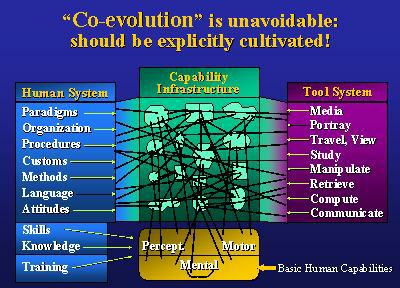 Fig.
1.
Fig.
1. 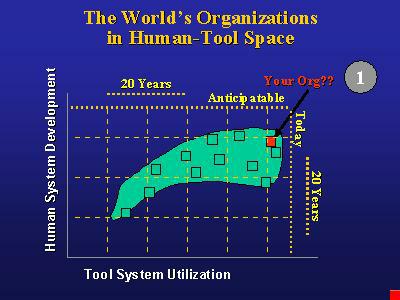 Fig.
2.
Fig.
2. 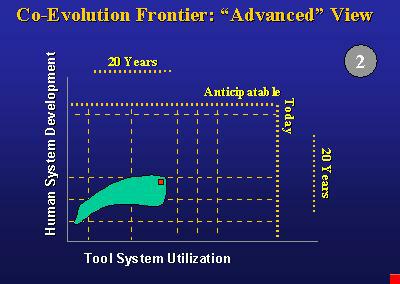 Fig.
3.
Fig.
3. 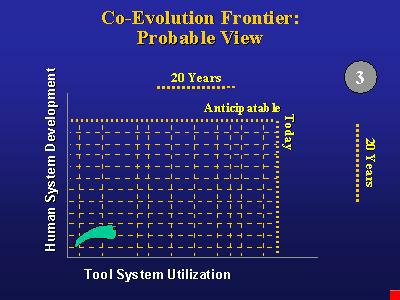 Fig.
4.
Fig.
4. 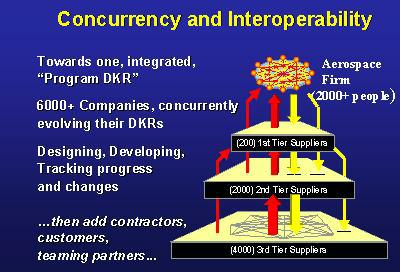 Fig.
5.
Fig.
5. 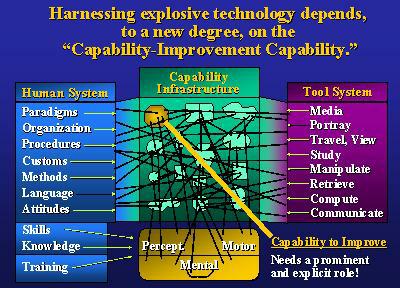 Fig.
6.
Fig.
6. 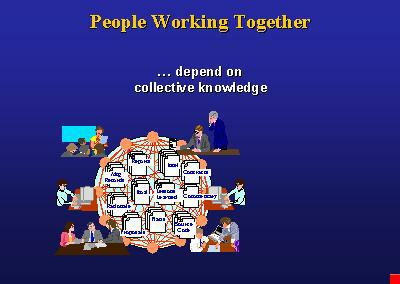 Fig.
7.
Fig.
7. 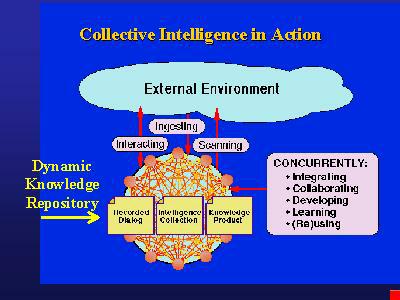 Fig.
8.
Fig.
8. 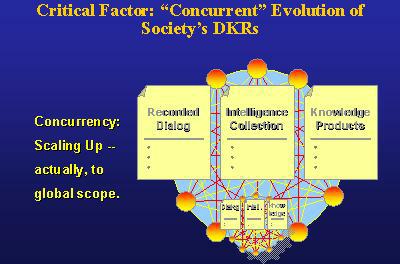 Fig.
9.
Fig.
9. 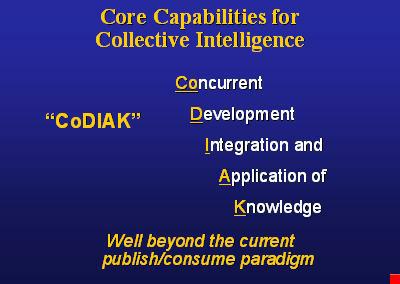 Fig.
10.
Fig.
10. 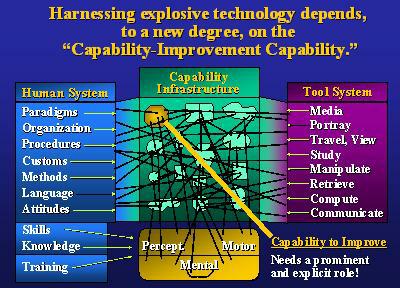 Fig.
11.
Fig.
11. 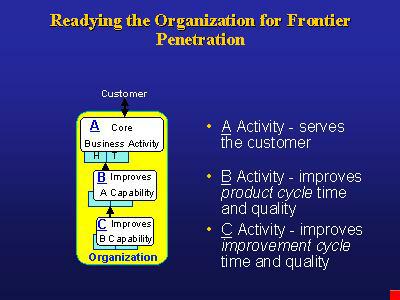 Fig.
12.
Fig.
12. 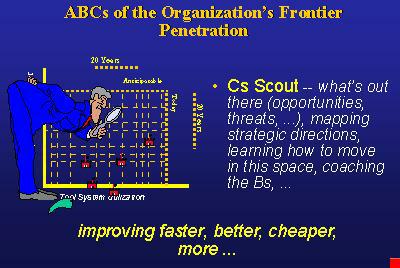 Fig.
13.
Fig.
13. 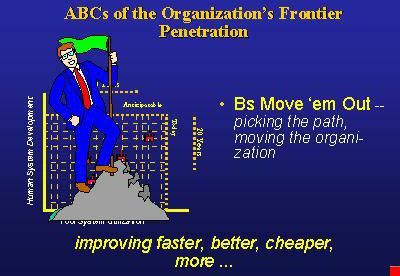 Fig.
14.
Fig.
14. 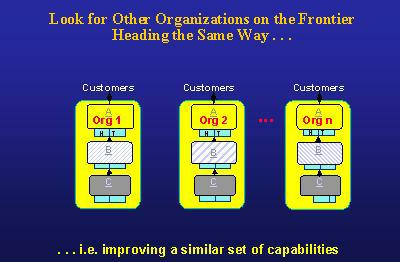 Fig.
15.
Fig.
15. 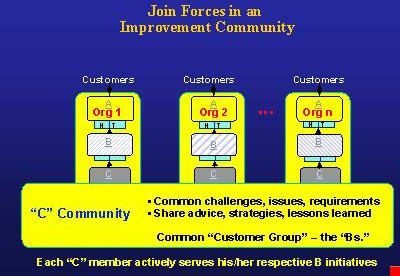 Fig.
16.
Fig.
16. 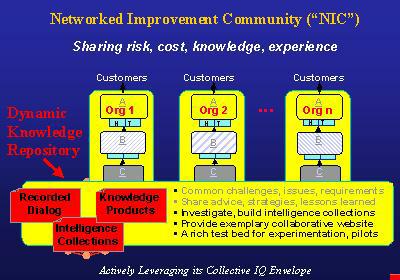 Fig.
17.
Fig.
17. 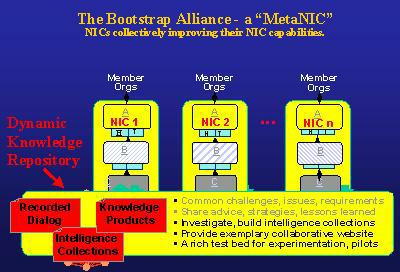 Fig.
18.
Fig.
18. 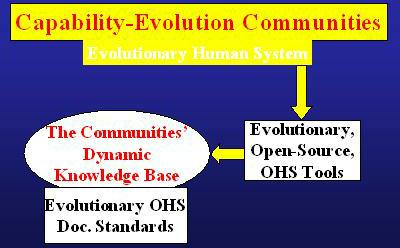 Fig.
19.
Fig.
19. 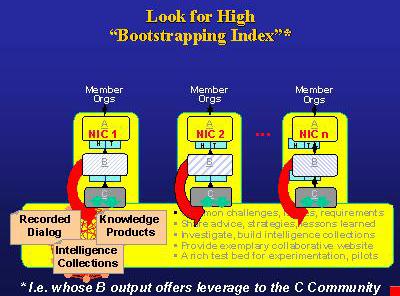 Fig.
20.
Fig.
20.  Ed
Kinderman:
I'd like to make another comment here. There energy is very
slightly on the radar screen. The first two articles in the latest issue
of Foreign Affairs deal with energy. The first one is a discussion
of how we don't have to worry because we have enough oil. It'll last forever.
But slipped into that is: we have enough oil for--I think it was four
trillion gallons. Anyway, I calculated it out, and this is the oil, not
only as oil but oil shale, tar sands and other difficult and environmentally
difficult things to get--that's enough, if we continue at current rates
of use, for about one hundred years. Nothing left. And, the arguments will
begin long before that. The other article that's there is a strong defense
of nuclear power, a lot of it devoted to explanations of how dirty wind
and photovoltaics are in the way of the waste they generate just in building
the facilities, and compare that to the nuclear waste. Of course, everybody
has their own point of view and I noticed the nuclear people didn't talk
about the amount of concrete that would have to be used in building containment
vessels for nuclear reactors.
Ed
Kinderman:
I'd like to make another comment here. There energy is very
slightly on the radar screen. The first two articles in the latest issue
of Foreign Affairs deal with energy. The first one is a discussion
of how we don't have to worry because we have enough oil. It'll last forever.
But slipped into that is: we have enough oil for--I think it was four
trillion gallons. Anyway, I calculated it out, and this is the oil, not
only as oil but oil shale, tar sands and other difficult and environmentally
difficult things to get--that's enough, if we continue at current rates
of use, for about one hundred years. Nothing left. And, the arguments will
begin long before that. The other article that's there is a strong defense
of nuclear power, a lot of it devoted to explanations of how dirty wind
and photovoltaics are in the way of the waste they generate just in building
the facilities, and compare that to the nuclear waste. Of course, everybody
has their own point of view and I noticed the nuclear people didn't talk
about the amount of concrete that would have to be used in building containment
vessels for nuclear reactors.